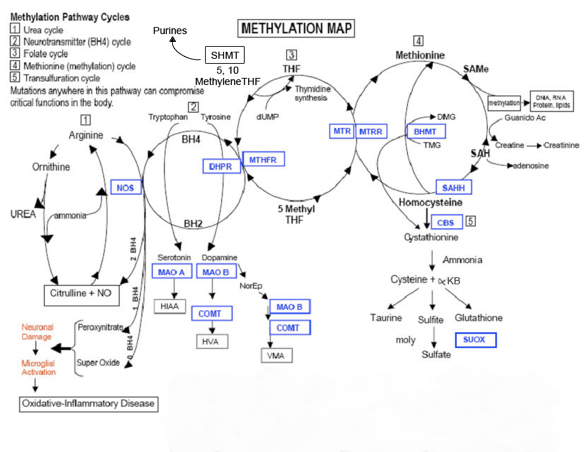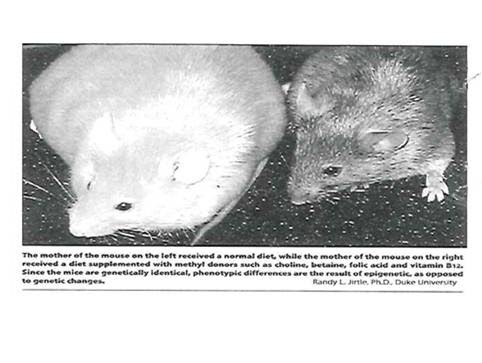Are you sick and tired of feeling sick and tired?
Have you been to 60 doctors and still have no answers?
Are you feeling hopeless about regaining your health?
If you don’t know about your MTHFR C677T gene status, you can be stumbling around in the dark as you try to resolve symptoms. You can be using the wrong supplementation for your genetic type. Knowledge about your MTHFR C677T gene can clarify the mistakes, sort out the confusion, and move you in the right direction.You need to supplement very carefully for this mutation, taking into account not only this gene, but also a number of other genes that impact the pathway in which MTHFR functions.
A mutation at MTHFR C677T reduces the number of methyl groups you can make. A methyl group is a small but mighty molecule. Other important small molecules are O2 (oxygen), H20 (water), and NO (Nitric Oxide), that is important for blood vessel diameter. These small molecules are critical to life.
Below is a depiction of a methyl group:

Methyl groups are central to the regulation of gene activity. They silence genes. At any point 80% of your genes should not be expressing. If you do not have adequate methyl groups, you will have aberrant gene expression and the problems that come with it.
Without enough methyl groups, you don’t form molecules that make DNA and RNA. Without these, making new cells is impaired. You age more rapidly. Wound healing is slow. You do not learn new tasks readily or have the ability to adapt to the changes in your environment easily. Your energy may sink to new lows. You may develop high homocysteine and the vascular inflammation and heart disease that come with this condition.
Beyond that, your methyl group producing pathways are intimately connected to your detox pathway. An MTHFR C677T mutation will reduce your ability to detox. There are other important biochemical pathways that connect to your methyl group producing ones, like pathways for neurotransmitter production, urinary excretion and folate metabolism. So you really need to address the MTHFR mutation if you have one.
If you are using a mainstream doctor, odds are they won’t know about MTHFR at all. New ideas can take a while to get into the mainstream. If you are using a Functional Medicine practitioner, they may know about it, but they won’t know the intricacies of the biochemistry needed to get the important interconnected pathways to function smoothly. They will give you methyl folate and/or methyl B12 that may help, or it may make you feel awful.
I am one of very few methylation genetics experts in the US. I work with more people who have MTHFR C677T mutations than any other doctor. It is my area of specialization. I work with Dr. Amy Yasko who ‘wrote the book’ on this. Her protocol looks at the intimate biochemistry in the connected group of pathways surrounding the MTHFR C677T mutation that impact on its function.
If you are having a medical problem that you cannot shake, and you know that you have an MTHFR C677T mutation, contact me at NancyMullanMD@aol.com. I will help you optimize the function in these pathways and get your body functioning well again.
Fine Tuning Your Treatment of Depression and Chronic Illness with MTHFR Genetics
What people are saying about my work:
So excellent! I literally learn something with every single post and I get clarification on things that have been lingering on my mind…
VB
You are giving people a huge gift by empowering them…It’s about helping the patient become their own healer by taking them to a higher level of consciousness…
AL
Thank you so much Dr. Mullan. Thank you so, so much for everything you do.
MS
Wow! I have to tell you, it’s so nice to hear good news especially about a child. Anxiety, OCD and a host of other mental/psychiatric symptoms have been a huge hurdle for me. So to hear this story of all those awful symptoms totally going away is such a bright light for me!!!!
TR
Nancy Mullan MD
Author, lecturer, clinician
Dr. Nancy Mullan is best known for her natural treatment of chronic illness, MTHFR+, Autism Spectrum Disorders, Psychiatric Disorders and Lyme.
NancyMullanMD@aol.com
www.NancyMullanMD.com
www.NancyMullanMD.com/blog
1122 W. Burbank Boulevard
Burbank, CA 91506
Phone: (818) 954-9267










You must be logged in to post a comment.